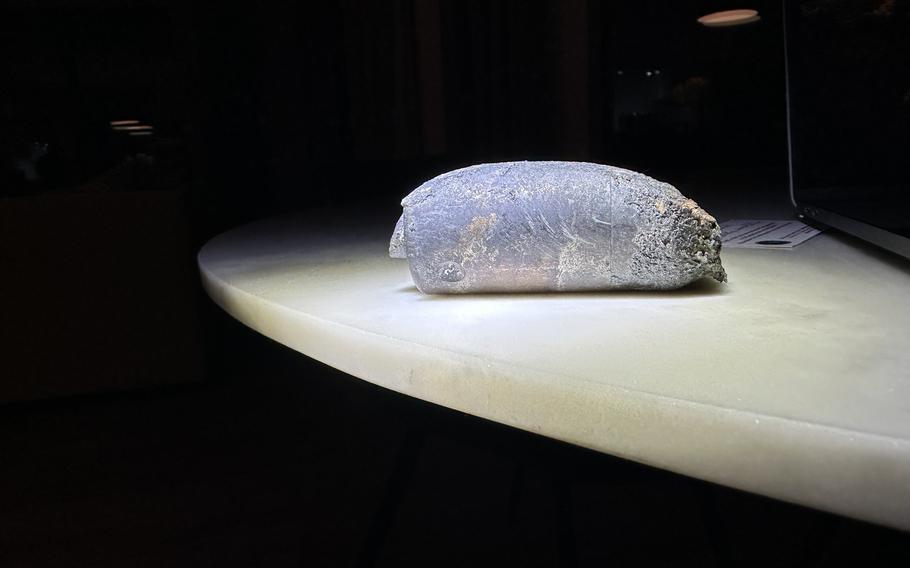
The metal debris that fell through Alejandro Otero’s roof on March 8 prompted speculation that it had tumbled from the International Space Station. (Alejandro Otero)
A metal object that fell from the sky and tore through the roof of a Naples, Fla., home last month before getting lodged in a family’s wall was debris from a pallet of trash NASA flung into space three years ago, officials confirmed Monday.
The 1.6-pound cylindrical object that struck Alejandro Otero’s house, frightening his son as it smashed through the roof, was part of a 5,800-pound collection of old nickel hydride batteries released from the International Space Station in March 2021, NASA said in a news release. The object was expected to burn up when reentering Earth’s atmosphere. Instead, part of it survived reentry in an incident that sparked nationwide curiosity about whether it really was out-of-this-world junk.
NASA is still investigating how the debris survived, adding that it “remains committed to responsibly operating in low Earth orbit, and mitigating as much risk as possible to protect people on Earth when space hardware must be released.”
After the debris struck his home on March 8, Otero told The Washington Post that he “knew it was from outer space.”
He searched online and read that the pallet of batteries was jettisoned in 2021, with NASA predicting that it would orbit Earth for two to four years before burning up in the atmosphere. But astrophysicist Jonathan McDowell, with whom Otero later connected, posted on X last month that the pallet would reenter the atmosphere between March 8 and March 9, almost exactly three years after it was released. It wouldn’t fully burn up, and some fragments would probably hit Earth’s surface, he said.
After the projectile hit his home, Otero posted about the debris on social media. His comments attracted the interest of astrophysicists and NASA, which sent investigators to collect the object for analysis.
“It’s unreal,” Otero said at the time.
NASA has a history of releasing equipment it wants to dispose of into space, where it normally vaporizes in the atmosphere. But Otero’s situation was an oddity.
Otero told The Post that he had contacted his insurance company about fixing his house, but it’s unclear whether he has been able to repair the damage or sought compensation for it. Attempts to reach him Tuesday evening were unsuccessful. In its post, NASA did not directly address the damage to Otero’s home and did not immediately respond to The Post’s questions about whether it will cover the cost of repairs.
If Otero seeks compensation, it’s difficult to say how the process would play out, said Mark J. Sundahl, a professor who teaches space law at Cleveland State University.
“This is all new ground,” he said.
Under international space law, the “launching state” - the country that procured an object’s launch or the country from which it was launched - is liable for any damage its objects cause. In 1981, the Soviet Union agreed to pay Canada millions in damages after one of its satellites reentered Earth’s atmosphere and disintegrated. The Post reported at the time that the five-ton satellite exploded into “countless fireballs” over Canada’s Northwest Territory, prompting search parties to look for debris.
The case with Otero’s house is unique in that it involves a civilian-owned property, which Sundahl said has little precedent. But it has brought a sense of urgency to a decades-long debate among space scholars about how to address debris and its potential to cause damage, he said.
“It’s something we’ve talked about but don’t see much of,” Sundahl said. “And now it’s like, this is real, and it’s something that we need to take into consideration because we’re only going to use space more and more.”
Daniel Wu contributed to this report.